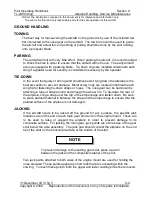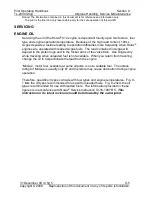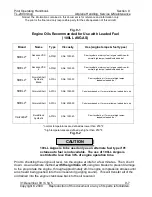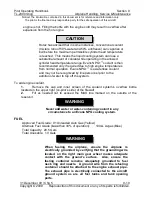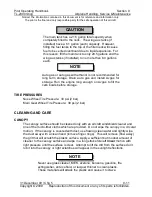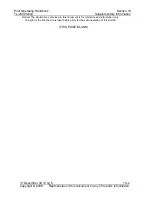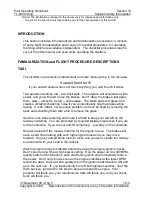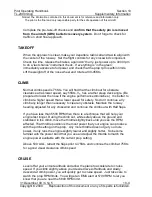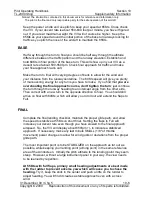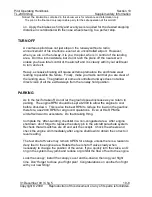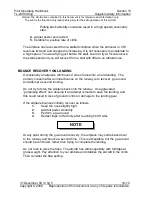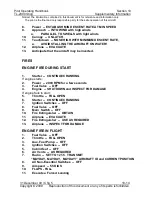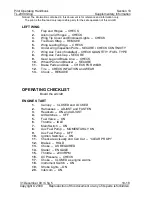
Pilot Operating Handbook
Section 10
TL-2000
Sting
Supplementary Information
Notice! The information contained in this document is for reference and information only.
The pilot is the final and only responsible party for the safe operation of this aircraft.
31 December 09 / Chg 5
10-6
Copyright © 2009 Reproduction of this document or any of its parts is forbidden.
Keep the power at idle and use pitch to keep your speed at 65Kts. Cross check
the VVI. If your decent rate is about 550-600 feet per minute, you have it figured
out. If you are at maximum weight the VVI will of course be higher. Keep the
65Kts as your speed around the initial portion of the base turn always looking for
traffic as you pitch the nose of the aircraft to maintain the 65Kts.
BASE
Half way through the turn to final you should be half way through the altitude
difference between the traffic pattern and the runway elevation. Establish and
hold 60Kts in final portion of the base turn. This will show up in your VVI as a
decent rate of about 500-550 fpm. Check final approach for traffic and make
your final approach radio call.
Make the turn to final with varying degrees of bank to allow for the wind and
your distance from the runway centerline. The 60Kts speed will give you plenty
of maneuvering energy for any turns you have to make. If you find that
you are
overshooting
the final approach course, don’t tighten the turn
; just continue
the turn through the runway heading to an intercept angle from the other side.
Then correct with a new turn in the opposite direction to final. You should still
arrive on final with 60Kts, which will allow you to roll out and extend the flaps to
Full.
FINAL
Complete the final landing checklist, maintain the proper glide path, and allow
the speed to stabilize at 55Kts on short final. Setting the flaps to Full will
increase your decent rate even though you have slowed to the final approach
airspeed. So, the VVI will display about /- to indicate a stabilized
approach. If necessary, make any last minute SMALL (1/8" of throttle
movement) power changes to allow for wind gusts or deviations from the proper
glide path.
The most important point is to be STABILIZED on the approach as far out as
possible, while keeping your landing point (aiming point) in the same reference
area of the windscreen. Initially the pitch attitude to the landing point may seem
steep. However, without a large instrument panel in your way, the view needs
to be learned by repetition.
At 55Kts with full flaps, primary small heading adjustments are best made
with the rudder to prevent adverse yaw which will cause you to chase the
heading.
Try it, keep the stick in the center and push a little on the rudder to
adjust heading. You will find it creates a stable approach even with a cross
wind.

